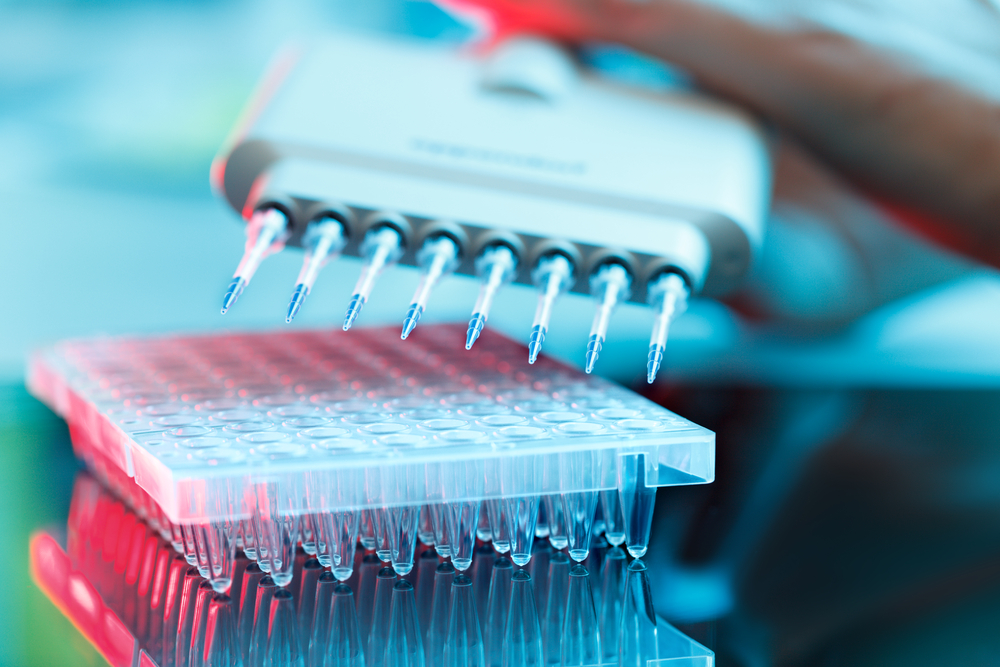Noninvasive Detection of Biomarkers May Improve ALS Diagnosis, Study Reports

The noninvasive detection of changes in the blood specific to amyotrophic lateral sclerosis (ALS) may improve the diagnosis of the disease, according to researchers.
Their study, “Initial Identification of a Blood-Based Chromosome Conformation Signature for Aiding in the Diagnosis of Amyotrophic Lateral Sclerosis,” appeared in the journal EBioMedicine.
Although clinicians have tools to monitor ALS progression, no clinically validated measure currently exists to diagnose the disease, which contributes to diagnostic delay. This delay may have significant consequences on patients’ health and lifestyle, and it may also limit patient recruitment to clinical trials.
Gene sequencing in ALS is mainly used to analyze familial risk and define biological subtypes in the subset of patients carrying genetic mutations. But it does not provide a strategy to improve early diagnosis in the majority of patients, who don’t have a known genetic link to the disease.
Other genetic analyses, including those of epigenetics — changes in gene activity, rather than in the gene sequence itself — may be helpful in complex neurodegenerative diseases such as ALS.
Patient-derived samples are increasingly being used as a source to identify potential blood-based biomarkers in ALS.
In this study, scientists analyzed blood and tissue samples from the Northeast ALS Consortium (NEALS) Biofluid Repository, based in New England, with EpiSwitch (Oxford Biodynamics, based in Oxford, England), a high-resolution technology that detects and validates domains within the genome — known as chromosomal conformation signatures (CCS) — that change gene regulation.
According to the researchers, this approach enables differentiation of epigenetic changes in diseased vs. nondiseased, as well as in pre-treatment vs. post-treatment states.
Ultimately, the research aimed to identify and validate a CCS for the diagnosis of ALS. The investigators first optimized a biomarker panel with a three-step selection process, which led to a distinct CCS for ALS, including changes in eight genomic loci (specific spots in chromosomes) detectable in blood.
These biomarkers were related to proteins involved in cellular processes linked to ALS symptoms, including the dysfunction of mitochondria (the powerhouses of cells); activation of a brain cell called microglia; the formation of myelin — the protective layer around nerve fibers, which is damaged in ALS, and the innate immune system.
The scientists then used the signature to determine a diagnosis for 74 patient samples. Results revealed an 83.33% sensitivity and a 76.92% specificity for detecting ALS.
They then performed a blinded diagnostic assessment of 16 samples (eight patients and eight healthy controls), which showed a sensitivity of 87.5% and a specificity of 75.0% in ALS.
“The sensitivity and specificity values achieved using the ALS CCS identified and validated in this study provide an indication that the detection of chromosome conformation signatures is a promising approach to disease diagnosis and can potentially augment current strategies for diagnosing ALS,” the researchers wrote.
“In this study, we identified, defined, and evaluated chromosome conformations as biologically distinguishing markers that comprise the first example of a noninvasive blood-based epigenetic signature for ALS,” they added.
The approach may also be used in future studies to monitor disease progression and to assess ALS mechanisms, the scientists said. They cautioned that these findings need to be validated in larger sample studies.






